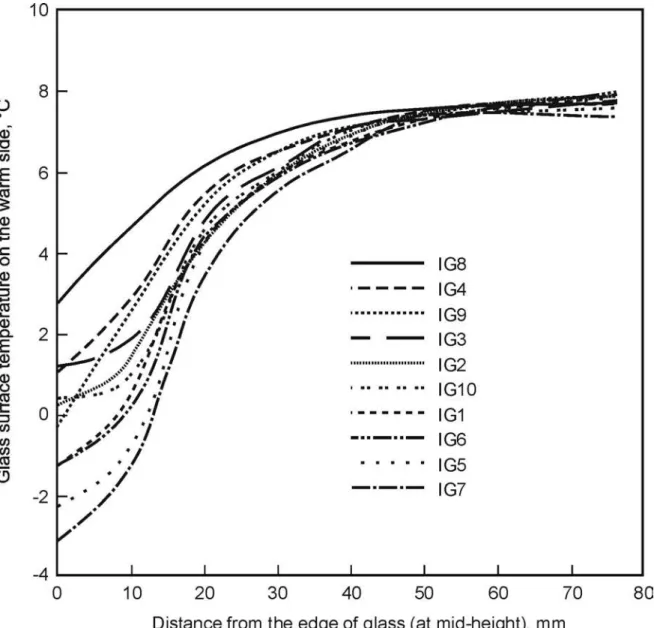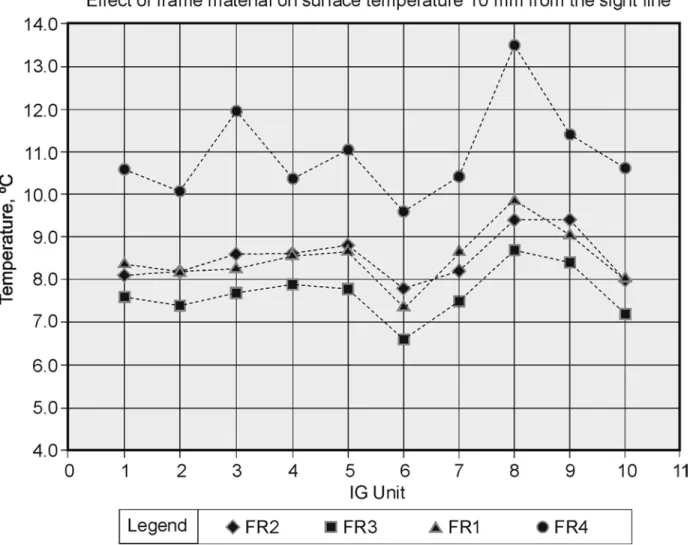Publisher’s version / Version de l'éditeur: Solplan Review, July 117, pp. 16-17, 2004-07-01
READ THESE TERMS AND CONDITIONS CAREFULLY BEFORE USING THIS WEBSITE.
https://nrc-publications.canada.ca/eng/copyright
Vous avez des questions? Nous pouvons vous aider. Pour communiquer directement avec un auteur, consultez la
première page de la revue dans laquelle son article a été publié afin de trouver ses coordonnées. Si vous n’arrivez pas à les repérer, communiquez avec nous à PublicationsArchive-ArchivesPublications@nrc-cnrc.gc.ca.
Questions? Contact the NRC Publications Archive team at
PublicationsArchive-ArchivesPublications@nrc-cnrc.gc.ca. If you wish to email the authors directly, please see the first page of the publication for their contact information.
Archives des publications du CNRC
This publication could be one of several versions: author’s original, accepted manuscript or the publisher’s version. / La version de cette publication peut être l’une des suivantes : la version prépublication de l’auteur, la version acceptée du manuscrit ou la version de l’éditeur.
Access and use of this website and the material on it are subject to the Terms and Conditions set forth at
Improved spacer bar design enhances window performance
Elmahdy, A. H.
https://publications-cnrc.canada.ca/fra/droits
L’accès à ce site Web et l’utilisation de son contenu sont assujettis aux conditions présentées dans le site LISEZ CES CONDITIONS ATTENTIVEMENT AVANT D’UTILISER CE SITE WEB.
NRC Publications Record / Notice d'Archives des publications de CNRC: https://nrc-publications.canada.ca/eng/view/object/?id=fe55fdad-3853-49d4-89c8-d9ea21ffeff6 https://publications-cnrc.canada.ca/fra/voir/objet/?id=fe55fdad-3853-49d4-89c8-d9ea21ffeff6
Improved spacer bar design enhances window performance
Elmahdy, A. H.
NRCC-47310
A version of this document is published in / Une version de ce document se trouve dans : Solplan Review, No. 117, July 2004, pp. 16-17
Improved Spacer Bar Design Enhances Window Performance
by A.H. Elmahdy
This article presents key results of recent research carried out by NRC’s Institute for Research in Construction on innovative spacer bar designs, commonly known as warm-edge technology.
Cet article présente les résultats clés de la recherche récemment menée par l'Institut de recherche en construction du CNRC sur les concepts novateurs de liteaux d'écartement (technologie des bordures chaudes).
Heat loss through the insulating glass (IG) units of windows can cause condensation leading to mould growth and deterioration of windows and wall sections, especially in cold climates. The high thermal conductivity of aluminum or steel spacer bars conventionally used to separate the panes in an IG unit, results in relatively high heat loss through the bars and the surrounding area of the window (known as the edge-of-glass region). This increases the potential for condensation. The edge-of-glass region extends about 60 mm (2.3”) from the edge of the frame or sash to the point where the glass surface temperature is the same as that of the center of the glass. IG units with higher surface temperatures in the edge-of-glass region are less prone to condensation. The temperature in this region is a function of factors including spacer bar design and frame material. The overall thermal performance of a window will be determined by the type of spacer bar, the glazing and the frame (for fixed windows) or sash (for operable windows). Thus, although a window with a high temperature in the edge-of-glass area will perform well in terms of condensation resistance, it may not necessarily show good overall thermal performance.
The use of spacer bars with lower thermal conductivity than conventional metal spacer bars in the edge-of-glass region is known as Warm-Edge Technology (WET). WET spacer bars have either a thermal break in the spacer assembly or are constructed of materials with low thermal conductivity. WET reduces the heat flow from the warm side to the cold side of the glazing, thereby decreasing
condensation. This is especially true of high-performance IG units with low-emissivity coatings on the glass and using an inert gas, such as argon or krypton, as an insulator in the sealed cavity.
A number of innovative spacer bars have been developed in the past decade. In order to evaluate the thermal performance of these new spacer bars, NRC`s Institute for Research in Construction (IRC) conducted a study. The study assessed the performance of ten different types of spacer bars (nine WET and one conventional) in IG units without window frames (unmounted) and with window frames (mounted) of various materials.
Flexible PVC Aluminum IG1 Desiccant Sealant IG2 Aluminum spacer Thermal-break foam Desiccant Sealant Sealant Desiccant IG3 Steel IG4 Fibreglass spacer bar Desiccant Primary sealant Secondary sealant Steel IG5
Foam with desiccant Sealant IG6 Desiccant Sealant Rigid PVC Galvanized steel Secondary sealant Primary sealant IG7 Desiccant Conventional metal spacer Sealant Foam with desiccant IG Tape mastic with desiccant Fluted aluminum shim IG9 Sealant Butyl Polyurethane IG10 Aluminum Desiccant Secondary sealant Primary sealant
Figure 1. Spacer bar assemblies IG1 to IG10 IG Units without Window Frames
Ten IG units, fabricated by different manufacturers (Figure 1), were tested for heat loss, by measuring their surface temperatures at the mid-height of the glass. All units were 152 mm x 1200 mm (6”x 48”), air-filled and made of clear glass.
Figure 2 shows the warm-side glass surface temperatures for the ten IG units without frames, when exposed to a temperature difference of 38 K [293 K (20°C) on the warm side and 255 K (-18°C) on the cold side]. Unit IG8 had the highest glass surface temperature at the edge-of-glass region, making it the best in terms of reducing condensation. IG7 had the lowest glass surface temperature in the edge-of-glass region. Although the temperature difference between the best- and poorest-performing IG units was only about 6o K in the edge-of-glass region, it could have a considerable effect on condensation resistance. Figure 2 also shows that the glass surface temperatures on all ten IG units, away from the edge-of-glass region were similar.
Figure 2. Warm-side glass surface temperatures for IG units
IG Units Installed in Window Frames
The IG units with ten different spacer bar configurations were then tested as part of a complete fixed window assembly. Temperatures were measured at different horizontal planes on the warm side of the window. Four different types of frame specimen, FR1 (redwood), FR2 (vinyl), FR3 (thermally broken aluminum) and FR4 (foam-filled fibreglass), were also used, to determine whether the type of frame had any influence on the spacer bar performance.
Figure 3 shows the effect of WET spacer bars on the temperature measured at 10 mm from the sight line, for each type of IG unit and frame specimen, when exposed to a temperature difference of 38o K. The combination of FR4 and highly insulated spacer bar IG8 offered the warmest glass-surface
temperature at the 10-mm plane (and at almost all the horizontal planes in the edge-of-glass region). Conversely, the combination of FR3 and hybrid spacer bar IG6 produced the lowest glass-surface temperature in the edge-of-glass region.
Figure 3. Effect of frame material on glass surface temperature 10 mm from sight line
R-value Performance
The overall R-value of a window is dependent on the type of spacer bar, glazing, and in particular, the thermal properties of the frame material. However, even with non-conductive frame materials, poor design may reduce the thermal performance of the window.
In general, wood has a high thermal resistance and therefore, the FR1 specimens had the best overall R-value, irrespective of which spacer bar was used. The only exceptions were spacer bars IG4 and IG6, where the R-values for FR2 specimens and FR1 specimens were about the same. The FR1 frames combined with the poorest-performing (with respect to R-value) WET spacer bar (IG6), had an R-value only slightly lower than when it was combined with the best performing WET spacer bar (IG8).
Concluding Notes
Manufacturers can use these results as a benchmark for choosing suitable combinations of spacer bars and frame materials to enhance the performance of windows. The results, however, are specific to the spacer bars and frame specimens tested and cannot be extrapolated to other window configurations without further testing.
Dr. A.H. Elmahdy is a principal research officer in the Building Envelope and Structure Program of the National Research Council of Canada’s Institute for Research in Construction in Ottawa.
![Figure 2 shows the warm-side glass surface temperatures for the ten IG units without frames, when exposed to a temperature difference of 38 K [293 K (20°C) on the warm side and 255 K (-18°C) on the cold side]](https://thumb-eu.123doks.com/thumbv2/123doknet/14189686.477794/4.918.63.808.103.408/figure-shows-surface-temperatures-frames-exposed-temperature-difference.webp)

